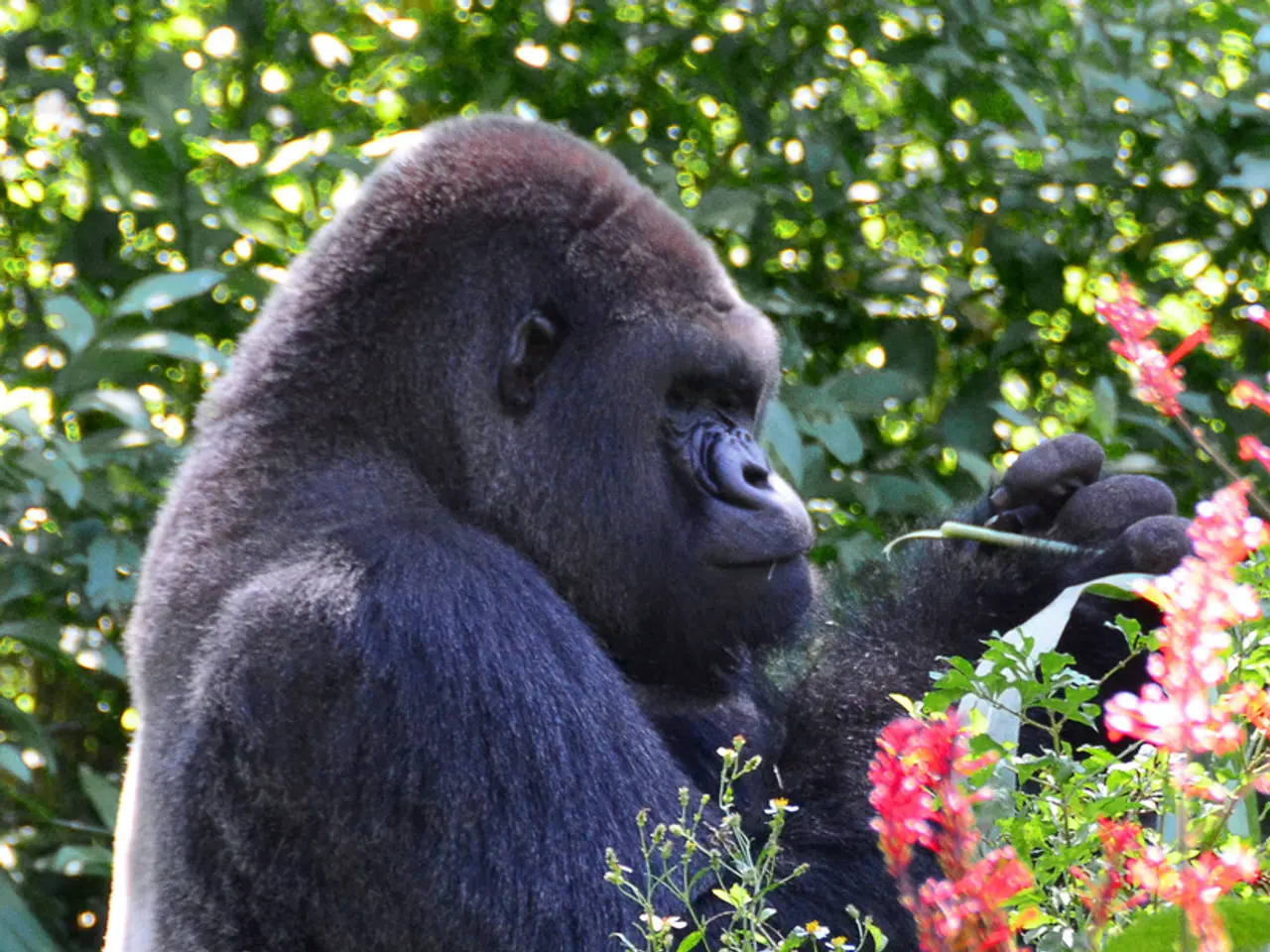Gorilla Breeding: Examining the Intricate Societal Arrangements and Sexual Reproductive Practices among Gorillas
In the dense rainforests of western and eastern equatorial Africa, two species of gorillas - the western gorilla (Gorilla gorilla) and the eastern gorilla (Gorilla beringei) - coexist, each further divided into four subspecies.
The social structure of these primates plays a significant role in their mating patterns and reproduction. Each troop or band, typically consisting of 5-30 individuals, is led and protected by a dominant silverback male, who makes crucial decisions about travel, feeding, and nesting locations.
Female gorillas reach sexual maturity between 7-8 years of age, although they may not give birth until several years later. When they do, they provide continuous care for their infants, carrying them against their chests for the first few months before the young begin riding on their backs. Nursing continues for 3-4 years, and youngsters typically stay in close proximity to their mothers until age 6-8.
Male competition for reproductive access is intense, with males vying for dominance through physical displays of strength, group defense, and attracting females through protection and leadership. The dominant silverback male, identifiable by a distinctive saddle of gray or silver-colored hair on his back, typically has primary breeding rights and protects females and offspring within his group.
However, when a new silverback successfully takes over a group, he may practice infanticide - killing nursing infants that are not his offspring. This unfortunate behaviour is a strategy to ensure that the new silverback's genes are passed on to the next generation.
Female gorillas show adaptive aggressive behaviours depending on their reproductive state and social environment. Pregnant females tend to be more aggressive than lactating females, possibly to secure resources necessary for fetal development while lactating females avoid aggression to protect their dependent infants.
Habitat fragmentation and degradation affect the population structure and genetic diversity of gorillas, impacting reproduction indirectly by altering group sizes and social stability. This is particularly noted in Cross River gorillas (Gorilla gorilla diehli) and other subspecies, where habitat loss causes population decline and restructures social units, potentially reducing mating opportunities and genetic exchange.
Understanding gorilla reproduction is crucial for effective conservation, as populations cannot quickly recover from decline and protection of existing social groups is essential. Female transfer between groups is the primary method for preventing inbreeding in gorilla populations.
Gorilla courtship involves subtle interactions rather than elaborate displays seen in some other primates. The composition and stability of gorilla groups directly influence reproductive patterns, with larger groups providing better protection against predators and outside male challenges.
Lone silverbacks may challenge established silverbacks to take over their groups or attempt to attract dispersing females to form new groups. However, this process can lead to infanticide, underscoring the complex and sometimes harsh realities of gorilla social dynamics.
In summary, gorilla mating patterns are primarily shaped by social hierarchy and female reproductive status, with ecological pressures like habitat fragmentation influencing reproduction indirectly. While the core social reproductive mechanisms are shared, differences across species and subspecies arise from variations in ecological context and social group structure. Understanding these differences is key to effective conservation efforts for these endangered species.
References: [1] Hill, M. O., & Lee, A. B. (2011). The behavioural ecology of gorillas. Oxford University Press. [2] Watts, M. J., & Oates, J. F. (2004). The primates of Africa and Madagascar. Indiana University Press. [3] Stumpf, R. P. (2005). Gorillas. University of Chicago Press. [5] Kano, Y., & Itani, K. (1980). The behaviour of the mountain gorilla. University of Chicago Press.
In the realm of education and self-development, studying the behavioral ecology of gorillas can provide valuable insights into social dynamics and reproduction patterns. During such learning, one can discover that the subtle interactions in gorilla courtship and the complexities of their social structure play crucial roles in shaping mating patterns.




